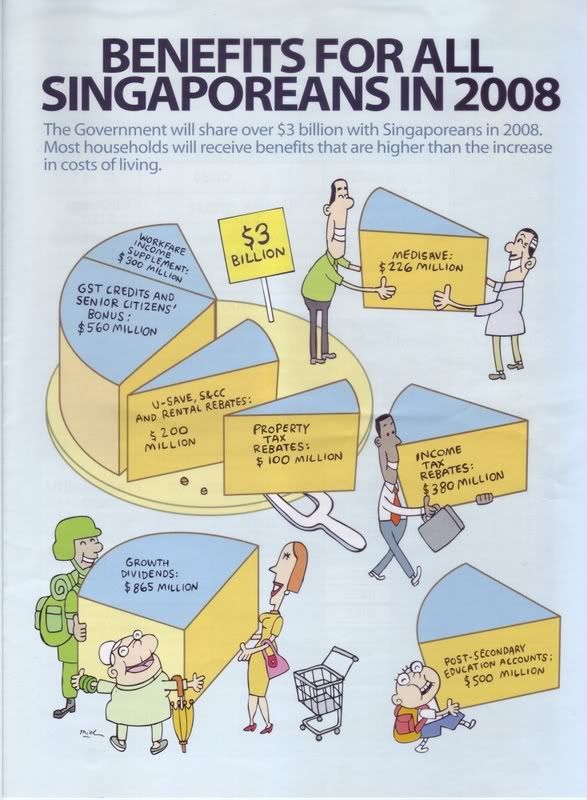John Ang / Guest Writer
 In recent, (as well as rather distant) memory, we have seen a relentless increase in prices of almost everything you would pay money for. Among them are rising food prices, rise in ERP, in medical care/insurance, and more recently, rising utility tariffs and public transport costs.
In recent, (as well as rather distant) memory, we have seen a relentless increase in prices of almost everything you would pay money for. Among them are rising food prices, rise in ERP, in medical care/insurance, and more recently, rising utility tariffs and public transport costs.
Through almost all these price increases, the trend has been that the average Singaporean has had no choice but to grit his teeth and bear the increases in cost, simply for the lack of an alternative; so much so that we have come to expect it to be the norm. (These days, I am so jaded that yet another price increase doesn’t incite indignation, but resignation.)
Goodies and Rebates
The Government has tried to help with these increases through the “goodies and rebates” given out in 2007 and 2008. The Workfare Incentive Scheme, Growth dividends, GST credits, U-Save and S&CC rebates all contribute to help buffer the increase in prices over and beyond their intended scope (for needy Singaporeans, at least).
Yet, I feel that the middle-class Singaporean isn’t really looking at the 3 billion dollars being thrown his way in terms of tiding him over (see record turnout and sales at NATAS and the various IT shows). In fact, like me, they might have clean forgotten that the payout was coming in October.
Free money (though not much) is always welcome (and how free it is can be debatable), but the way it is now, I feel that these monies can be put to much better use by the individual (with some government help).
Here’s how
When I read about the increase in subscription fees for Singtel’s land lines, I just shrugged in resignation and moved on to the next page. Imagine the breath of fresh air I felt when the next day, I opened the newspaper to see Telco wars: StarHub dangles $100 carrot. After such a long time of having “no choice”, here on offer was a cheaper alternative, based on an alternative infrastructure (VoIP instead of land lines).
It made me realise that the reason we have no choice is because we have been neglecting potential alternative infrastructures.
Thus, instead of just giving citizens money to buffer the increase in electricity tariffs, why not put that money in an account (accessible with singpass), that in addition to offsetting bills, can also be used to purchase environmentally friendly, energy saving electrical appliances, but more importantly, used to build up alternative infrastructure, such as self-power generation through the use of solar, wind, or biomass means, or to even have the house supply the grid.
Or, how about using these monies to provide a fast, convenient system. For example, in my article on cycling as a form of public transportation, people can actually fast track these credits to buy bicycles, or even use them to buy bike rentals or maintenance. (All these through vendors at bulk rates).
The incentives in pursuing these alternative paths include convenience to the individual, reducing his expenditure and more generally, alleviate the pressure on our existing infrastructure as well.
In short, like Starhub, we would be generating competition for the power companies, for the transport companies, for all the companies that you could think up an alternative to. If there is one thing true about competition, it’s that it brings prices down. We all could do with some of that.
———
